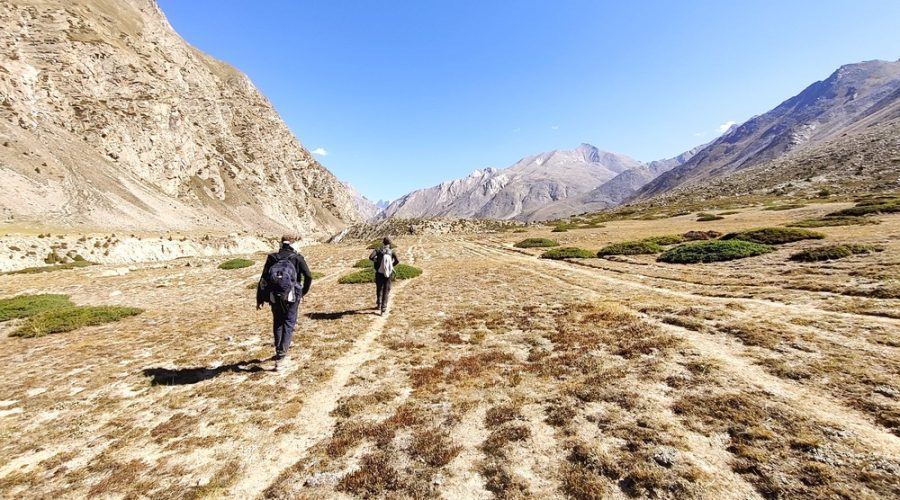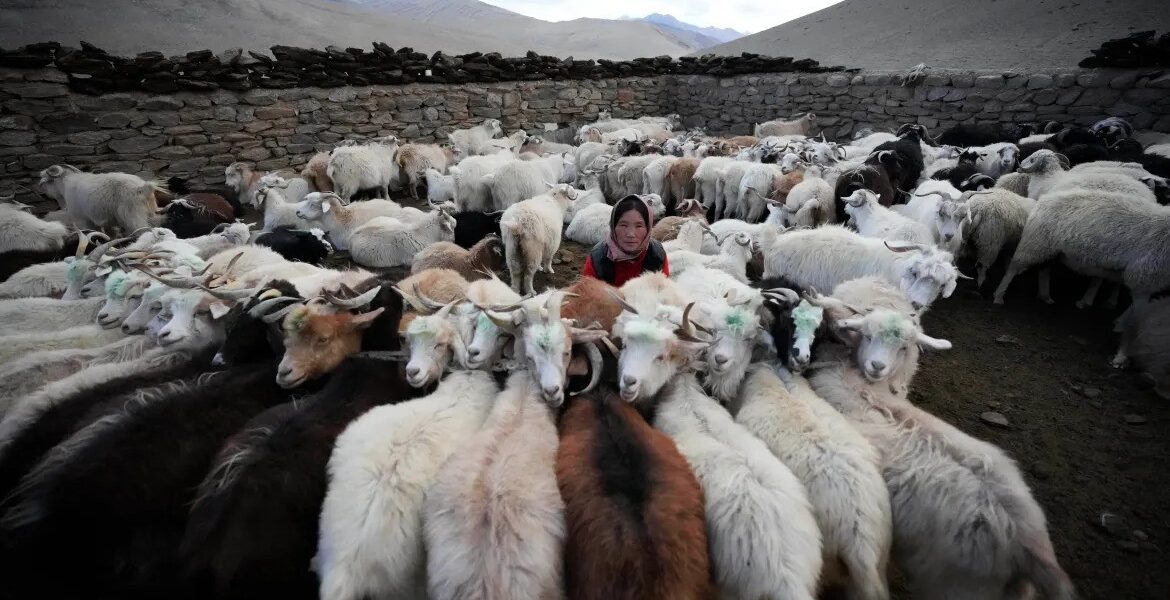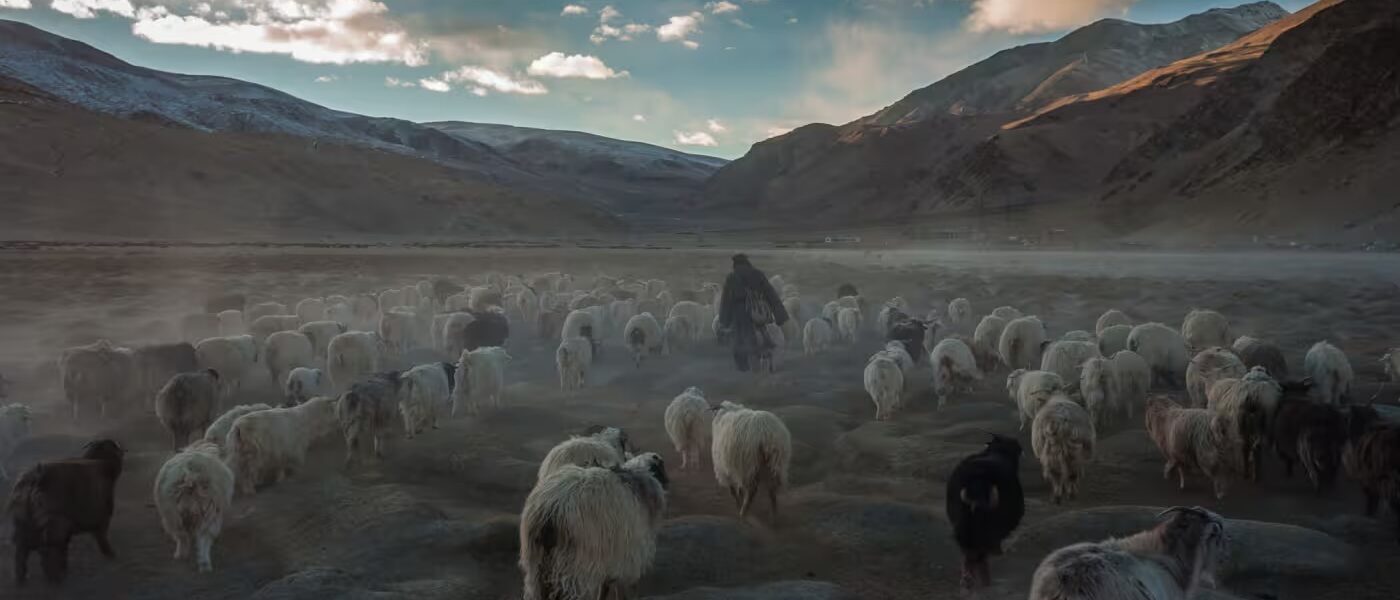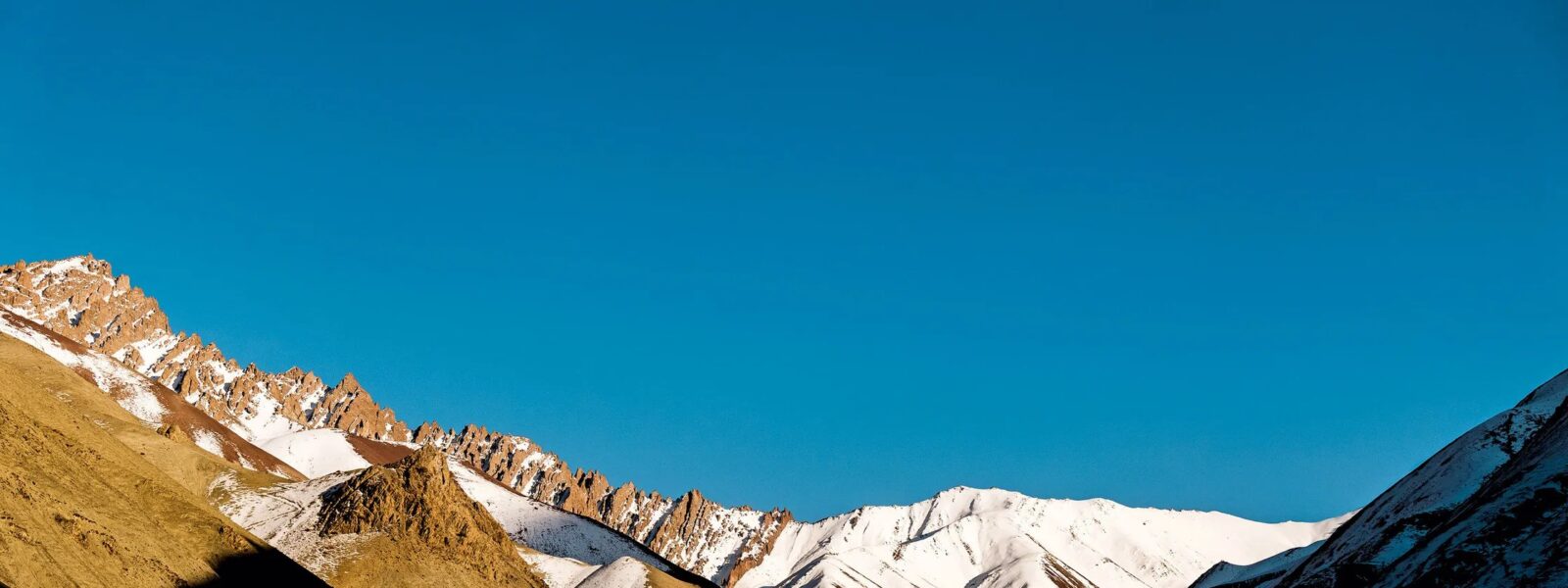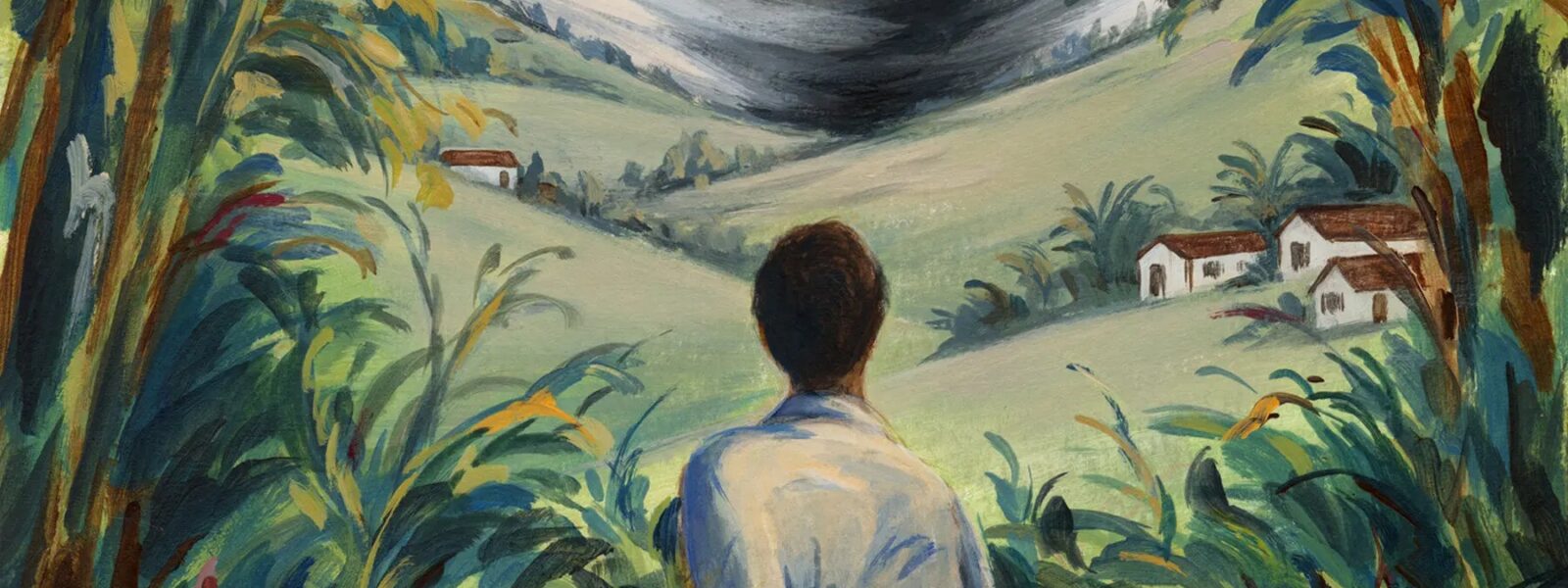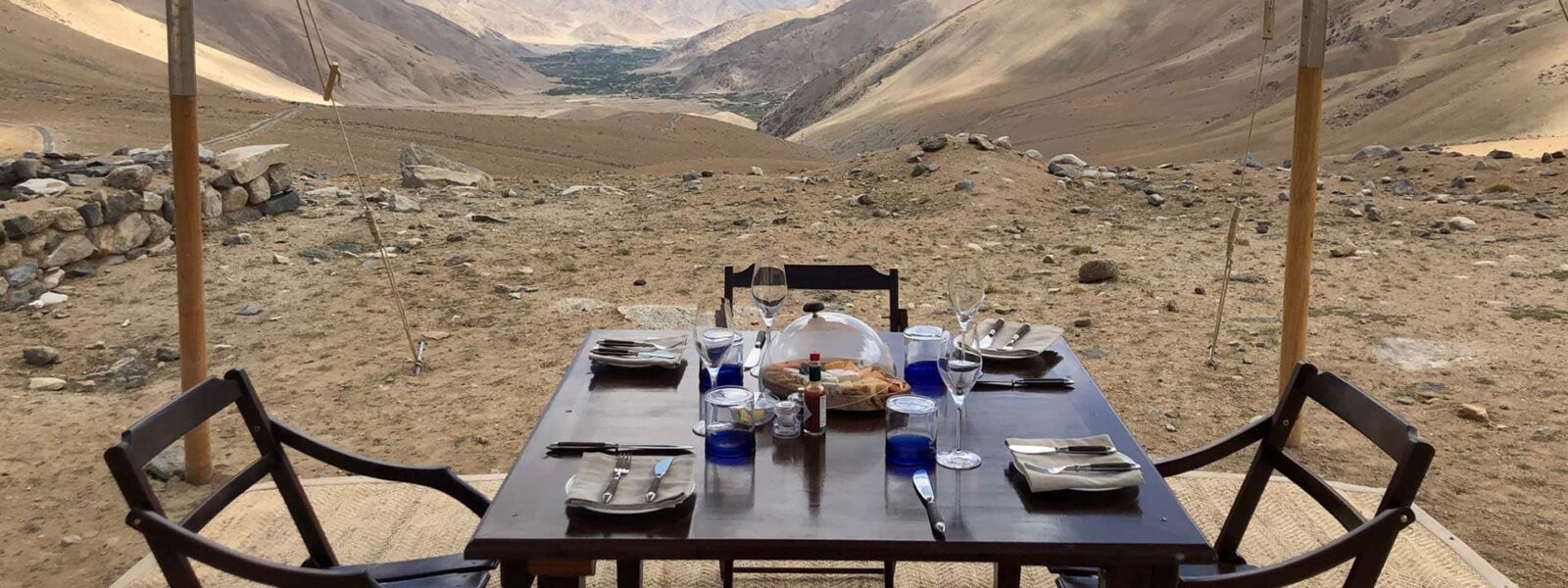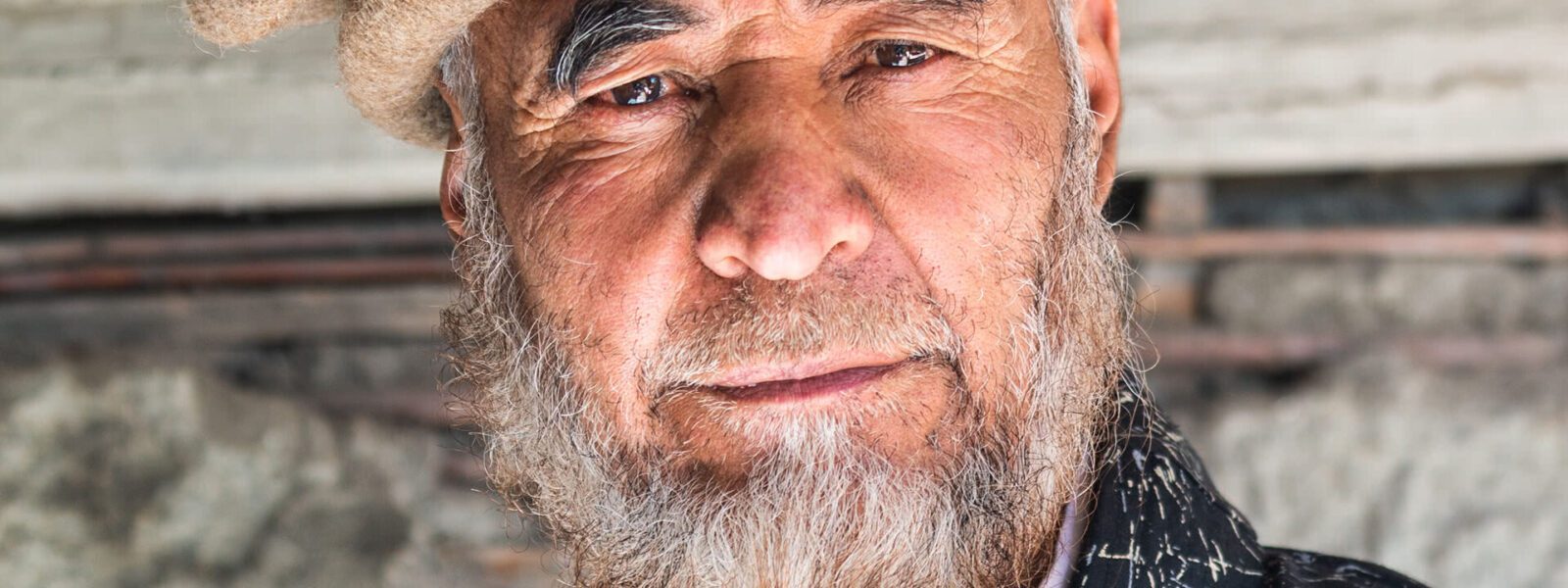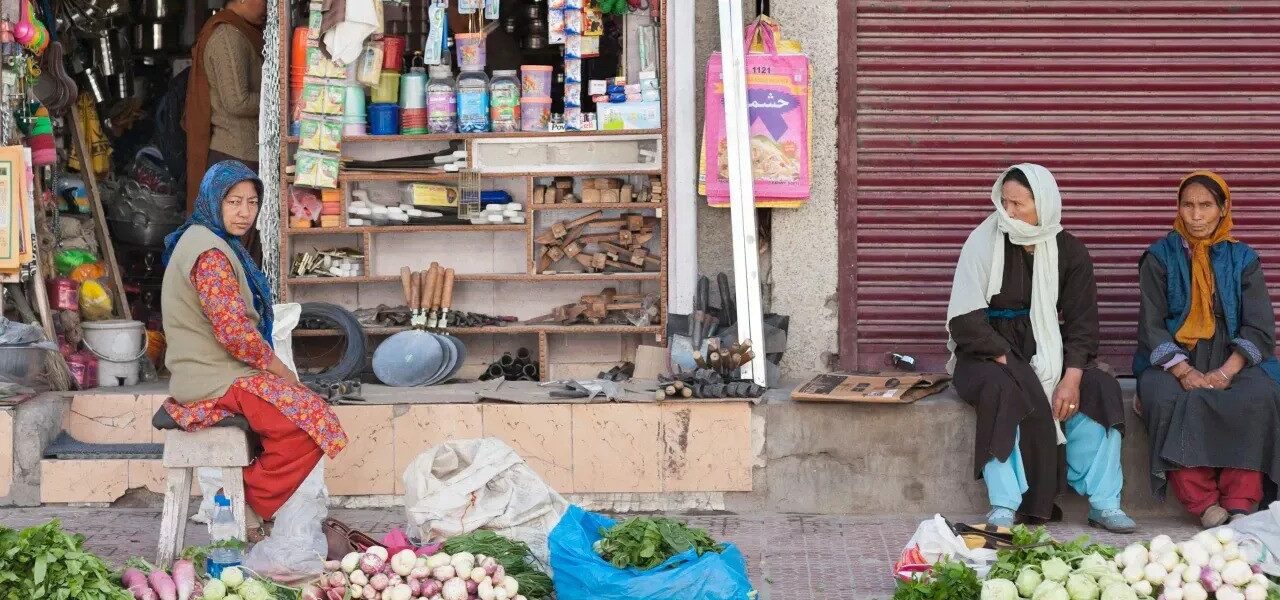Ladakh Himalayan trek, a mesmerizing journey through jagged peaks and ancient traditions, unfolds in the northern reaches of India’s Himalayan mountains. This remote paradise boasts vast high-altitude plains, vibrant monasteries perched on cliffs, and summits that soar beyond 6,000 meters—an adventurer’s dream. Picture yourself standing atop a rugged ridge, gazing at Himalayan vistas that stretch endlessly, outshining even Europe’s tallest mountains like Mont Blanc or Mount Elbrus. Trekking in Ladakh isn’t just a physical journey; it’s a plunge into a world where altitude, solitude, and raw beauty converge. From the thrill of crossing mountain passes to the serenity of highland monasteries, Ladakh’s Himalayan roof offers an experience that redefines adventure travel. In this guide, we’ll uncover why Ladakh’s Himalayan treks eclipse Europe’s peaks, spotlight the best routes, and arm you with everything needed to plan your high-altitude trekking Ladakh adventure.
Why Ladakh’s Himalayan Treks Outshine Europe’s Tallest Mountains
Ladakh’s Himalayan treks weave a spell that Europe’s tallest mountains can’t match, blending extreme altitudes with a wildness that feels untouched by time. The Himalayan roof Ladakh unveils isn’t just higher—it’s a realm of rugged trails and Himalayan highlands where every step feels like a conquest. Europe’s peaks, like Mont Blanc or the Alps, dazzle with groomed paths and tourist hubs, but Ladakh offers something rarer: solitude and scale. This section explores why trekking in Ladakh stands above Europe’s highest summits, diving into comparisons that highlight its supremacy for adventure seekers craving Himalayan expeditions.
Comparing Ladakh Peaks to Europe’s Highest Summits
When comparing Ladakh peaks to Europe’s highest summits, the contrast is stark—both in numbers and spirit. Ladakh’s giants, like Kang Yangtse at 6,400 meters and Dzo Jongo at 6,280 meters, tower over Mont Blanc (4,810 meters) and Mount Elbrus (5,642 meters). But it’s more than altitude—Ladakh’s Himalayan mountains exude a raw, untamed essence absent in Europe’s polished ranges. Trekking in Ladakh means navigating remote trails through the Indian Himalaya, where Himalayan shepherds guide yaks across mountain ridges, a scene far removed from Mont Blanc’s cable-car crowds or Elbrus’s ski lifts.
The experience deepens the divide. Ladakh’s peak exploration demands acclimatization—starting at Leh altitude (3,500 meters), you’re already higher than most European trailheads. Europe’s tallest mountains offer huts and marked paths, while Ladakh’s rugged trails wind through high-altitude plains like Nimaling, testing endurance with thin air and rocky scrambles. Culturally, Ladakh enriches treks with Tibetan culture—think prayer flags fluttering near monasteries—while Europe’s summits lean on scenic beauty alone. For those weighing Ladakh vs Europe highest peaks, the former’s isolation and grandeur win, offering Himalayan expeditions that feel like true adventure journeys.
Practically, preparation differs too. High-altitude trekking Ladakh requires trekking gear for subzero nights and UV protection for blazing days, unlike Europe’s milder summit kits. Kang Yangtse’s ascent, for instance, involves technical climbs over ice, a challenge Mont Blanc rarely poses. Readers planning adventure travel Ladakh will find this comparison illuminating—Ladakh’s Himalayan roof isn’t just taller; it’s a wilder, more rewarding trek that leaves Europe’s highest summits as footnotes in the annals of mountain hiking.
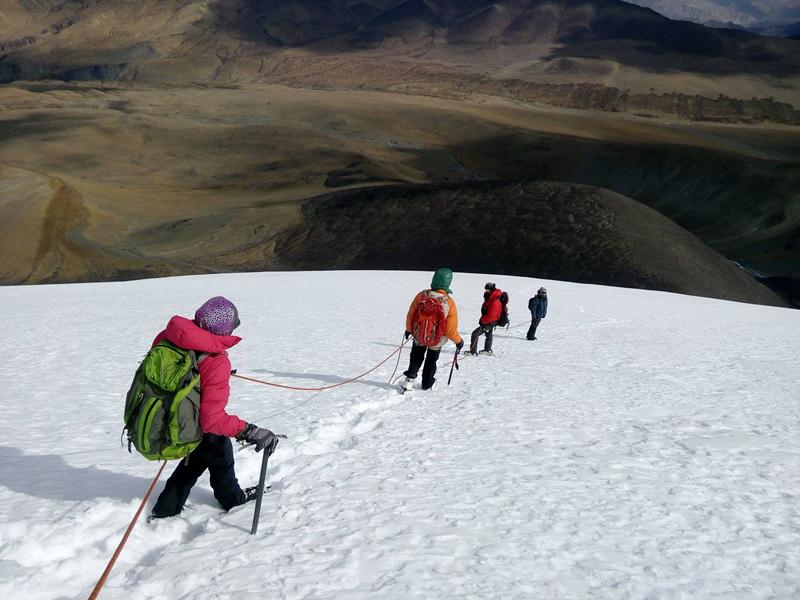
High-Altitude Plains vs European Alps: A Trekker’s Perspective
From a trekker’s perspective, Ladakh’s high-altitude plains versus the European Alps is a study in extremes. Ladakh’s Nimaling plateau, sprawling at 4,800 meters, offers a vast, windswept stage framed by Himalayan highlands—nothing like the Alps’ forested valleys below Mont Blanc (4,810 meters). Trekking Ladakh peaks vs Alps reveals a core difference: Ladakh keeps you aloft on elevated plains for days, while the Alps dip into lower altitudes between peaks. This sustained height—think Dzo Jongo at 6,280 meters—delivers Himalayan vistas that dwarf the Alps’ tighter, tree-lined views.
The terrain amplifies this. Ladakh’s rugged trails, like those crossing Gongmaru La (5,200 meters), demand stamina across rocky, oxygen-scarce heights—no cozy chalets here, just high-altitude camping under starry skies. The Alps, though steep, offer gentler gradients and frequent rest stops, softening the challenge. Ladakh’s Himalayan roof immerses you in a barren, moonlike wilderness where Himalayan shepherds roam, contrasting with the Alps’ civilized charm—think Swiss villages versus Ladakh’s solitude. For those exploring Ladakh’s Himalayan roof on foot, the scale and silence are unmatched.
Preparation underscores the gap. Acclimatization tips are critical for Ladakh’s high-altitude adventures—days in Leh prevent altitude sickness—while the Alps allow quicker ascents. The best treks in Ladakh, like Markha Valley, thrive in summer’s dry clarity (June-September), avoiding Europe’s soggy trails. This trekker’s lens reveals why Ladakh’s elevated plains outshine the Alps: they offer a raw, expansive connection to the Indian Himalaya, blending adventure travel Ladakh with a grandeur Europe’s tallest mountains can’t rival.
Best Treks in Ladakh: Exploring the Himalayan Roof
The best treks in Ladakh unlock the Himalayan roof’s treasures, from scenic valleys to towering summits that redefine peak ascents. These Himalayan trekking routes Ladakh offers—Markha Valley, Kang Yangtse, and Dzo Jongo—blend rugged trails with cultural gems, outpacing Europe’s tallest mountains in thrill and authenticity. Each trek showcases Ladakh’s ranges, high-altitude plains, and remote trails, delivering adventure travel Ladakh at its finest. Below, we’ll dive into three standout journeys that prove why Ladakh’s Himalayan treks reign supreme for those craving heights and horizons beyond the Alps.
Markha Valley Trek: A Journey Through Ladakh’s Wilderness
The Markha Valley trek is a jewel among Himalayan trekking destinations Ladakh boasts, a 7-9 day odyssey through Ladakh’s wilderness that captivates with every mile. Starting near Leh, this trek ascends to Gongmaru La (5,200 meters), unveiling Himalayan vistas of snow-dusted peaks and sprawling valleys. Unlike Europe’s highest peaks, where trails teem with tourists, Markha Valley’s rugged trails feel pristine, winding past Himalayan shepherds and mud-brick villages like Skiu. The Markha Valley trek in Ladakh itinerary covers 80 kilometers, offering a tapestry of high-altitude plains, icy rivers, and mountain ridges that echo the Karakoram range’s majesty.
This trek’s allure lies in its variety. Crossing Nimaling plateau, you’ll camp amid Himalayan highlands, waking to views that dwarf Mont Blanc’s vistas. Compared to trekking Ladakh peaks vs Alps, Markha Valley skips the ski lifts and crowds, embracing raw mountain hiking. Acclimatization is key—begin at Leh altitude (3,500 meters) and ease into the climb, packing trekking gear like sturdy boots and down jackets for cold nights. Summer (June-September) is the best time to trek Ladakh’s high peaks, ensuring dry paths and vibrant landscapes that shine in golden light.
Practical perks abound. Teahouses dot the route, but high-altitude camping dominates, immersing you in Ladakh’s outdoors. Cultural stops at Ladakh monasteries like Lhakir add depth—sip butter tea with monks while soaking in Tibetan culture, a touch Europe’s trails lack. For those seeking the best treks in Ladakh, Markha Valley blends adventure journeys with Himalayan roof splendor, proving why Ladakh outshines Europe’s tallest mountains in every rugged step.
Climbing Kang Yangtse: Ladakh’s 6000m Peak Adventure
Climbing Kang Yangtse, a 6,400-meter titan among Ladakh 6,000m peaks, is a high-altitude trekking Ladakh journey that eclipses Europe’s summits in scale and solitude. Nestled in Hemis National Park, this peak ascent starts near Markha Valley, threading through remote trails to a summit that towers 1,600 meters above Mont Blanc. The climbing Kang Yangtse in Ladakh trek spans 5-7 days, with base camps at 5,000 meters offering Himalayan vistas of snowy ranges and distant monasteries. Unlike Europe’s groomed trails, Kang Yangtse’s rugged ascent demands grit, technical skill, and trekking permits Ladakh requires for restricted zones.
The climb unfolds over highland plains and rocky scree, with mountain crossings testing your mettle. At the summit, you’re atop Ladakh’s Himalayan roof, gazing across peaks that stretch into Tibet—views that humble the Alps’ vistas. Compared to Ladakh vs Europe highest peaks, Kang Yangtse’s isolation trumps Mont Blanc’s accessibility—no tourist hordes here, just Himalayan expeditions in their purest form. Acclimatization tips are vital—days in Leh adjust you to thin air—while trekking gear like crampons and ice axes tackle the final icy push, a challenge Europe’s milder kits sidestep.
Why Kang Yangtse? It’s a pinnacle among the best treks in Ladakh, merging peak exploration with adventure travel Ladakh’s raw edge. Late summer (August-September) avoids monsoon mud and winter snow, making it ideal. The trail’s solitude—shared with yaks, not groups—offers a triumph Europe’s tallest mountains can’t match. For those craving high-altitude adventures, Kang Yangtse proves why Ladakh’s Himalayan roof soars above, delivering a trek that’s both a physical and spiritual ascent.
Dzo Jongo: A High-Altitude Trekking Gem in Ladakh
Dzo Jongo, a 6,280-meter standout among Ladakh trekking routes above 6,000m, is a high-altitude trekking Ladakh gem that shines brighter than Europe’s peaks. Starting near Markha Valley, this 5-6 day trek climbs from Leh’s plains to a summit that rivals Kang Yangtse’s grandeur. The trail weaves through mountain passes like Gongmaru La, past elevated plains, and up rocky slopes, ending in a peak ascent that outstrips Mont Blanc by over 1,400 meters. Unlike Europe’s tourist-heavy trails, Dzo Jongo’s remote trails offer solitude amid Himalayan highlands, a trekker’s paradise.
The ascent begins with acclimatization in Leh—crucial for altitudes that challenge even seasoned hikers. As you climb, Himalayan vistas unfold—jagged peaks, high-altitude plains like Nimaling, and distant Ladakh ranges. The trek’s ruggedness calls for trekking gear—sturdy boots, warm layers, and ropes for the summit—while high-altitude camping replaces Europe’s cozy huts. Compared to trekking Ladakh peaks vs Alps, Dzo Jongo’s stark beauty and sparse paths outshine the Alps’ gentler, crowded routes. Summer (July-August) is prime, with clear skies enhancing this Himalayan expedition.
Cultural touches elevate the journey—trails near Ladakh monasteries like Lhalung weave in Tibetan culture, a layer Europe’s summits lack. The summit push rewards with panoramic views that humble Mont Blanc’s vistas, proving why the best high-altitude treks in Ladakh stand apart. For adventure travel Ladakh enthusiasts, Dzo Jongo blends challenge and serenity, cementing Ladakh’s Himalayan roof as a trek above Europe’s highest peaks in every way.

Planning Your Adventure Travel in Ladakh
Adventure travel Ladakh is a dream worth planning meticulously—from timing your Himalayan trek to packing the right gear. Whether you’re eyeing Markha Valley’s scenic trails or Kang Yangtse’s towering summit, success hinges on preparation. This section delivers actionable insights on the best time to trek Ladakh’s high peaks, securing trekking permits, and exploring Ladakh monasteries along remote trails, ensuring your high-altitude trekking Ladakh journey outshines even Europe’s grandest mountain adventures.
Best Time to Trek Ladakh’s High Peaks
Timing is everything for the best time to trek Ladakh’s high peaks—miss the window, and you’re battling snow or heat. June to September is the golden season for Himalayan trekking routes Ladakh offers, when the Himalayan roof sheds its winter veil. In Leh (3,500 meters), summer days hit 20°C, while high-altitude plains like Nimaling hover at 5-10°C—ideal for trekking in Ladakh without frostbite risks. Monsoon drenches southern India, but Ladakh’s rain shadow keeps its rugged trails dry, unlike the soggy Alps in summer.
June kicks off with crisp skies and fewer trekkers—perfect for remote trails like Dzo Jongo. July and August peak with mild weather, though mountain passes like Gongmaru La may see snowmelt streams—pack waterproof trekking gear. September bathes Himalayan vistas in golden light, but nights dip below zero at 5,000m, demanding warm layers. Winter (October-May) cloaks Ladakh’s peaks in snow, making Kang Yangtse a mountaineering feat—Europe’s Mont Blanc, by contrast, sees year-round action thanks to infrastructure. Acclimatization tips are non-negotiable—spend 2-3 days in Leh adjusting to thin air before tackling high-altitude adventures.
This season aligns with Ladakh’s outdoors at its best, offering clear paths and vibrant landscapes. Unlike Europe’s highest peaks, where trails stay open longer, Ladakh’s Himalayan roof shuts down outside summer, emphasizing its wild nature. For adventure travel Ladakh, June-September ensures a trek above Europe’s tallest mountains in safety and splendor.
Trekking Permits and Gear for Ladakh Himalayan Trails
Trekking permits and gear for Ladakh Himalayan trails are your gateway to a seamless high-altitude trekking Ladakh experience. Inner Line Permits (ILP) are required for restricted areas like Kang Yangtse and Dzo Jongo, safeguarding border zones near Tibet. Apply online via Leh’s District Magistrate or through local agencies—costing ₹600-800, it’s valid for 15 days. Markha Valley skips this step, but always verify updates. Unlike Europe’s Alps, where permits are rare, Ladakh’s remoteness demands this extra layer for adventure journeys.
Trekking gear is non-negotiable—Ladakh’s Himalayan treks test you with extremes. Sturdy boots with ankle support tackle rocky mountain ridges, while layered clothing (thermals, fleece, waterproof jacket) handles swings from 25°C days to -5°C nights. A -10°C sleeping bag and four-season tent are musts for high-altitude camping on Ladakh treks—Mont Blanc’s huts pale in comparison. Poles steady you on steep trails, and a 50L backpack hauls essentials. UV-protective hats and sunglasses shield against the 5,000m sun, a threat Europe’s milder climbs sidestep.
Navigation tools—GPS or maps—guide you through unmarked paths, unlike the Alps’ signposts. Pack a first-aid kit, high-calorie snacks (nuts, dried fruit), and a water purifier—streams vanish above 4,000m. Trekking permits for Ladakh high-altitude trails ensure legal access, while gear ensures survival, making adventure travel Ladakh a triumph over nature’s wildest challenges, far beyond Europe’s cushioned trails.
Ladakh Monasteries Along Remote Trails
Ladakh monasteries along remote trails infuse Himalayan treks with spiritual richness, setting them apart from Europe’s peaks. Hemis Monastery, a 17th-century gem near Markha Valley at 3,600 meters, sprawls across a hillside—its golden Buddha and vibrant thangkas offer a cultural pause. Unlike the Alps’ quaint churches, these highland monasteries pulse with Tibetan culture—chants echo across mountain ridges, a sound Europe’s trails can’t replicate. Trekkers on Ladakh Himalayan treks with monasteries can rest here, sipping butter tea while monks share ancient tales.
Thiksey Monastery, at 3,600 meters near Leh, mirrors Lhasa’s Potala Palace—its 15m Maitreya statue awes visitors acclimatizing for high-altitude adventures. Along Dzo Jongo’s trails, smaller gompas like Lhalung dot the landscape, their prayer flags fluttering against Himalayan vistas. These aren’t tourist traps—monks live and pray here, offering trekkers a window into Ladakh’s soul. Europe’s summits lack this mysticism, making Ladakh’s rugged trails a journey of body and spirit. Respect is key—dress modestly, remove shoes, and donate modestly if you can.
Timing enhances the experience—morning prayers at Hemis reveal its vibrancy. These Ladakh monasteries blend seamlessly with adventure travel Ladakh, turning peak ascents into cultural odysseys. For trekkers craving more than Himalayan highlands, this spiritual thread elevates Ladakh’s Himalayan roof above Europe’s highest peaks.
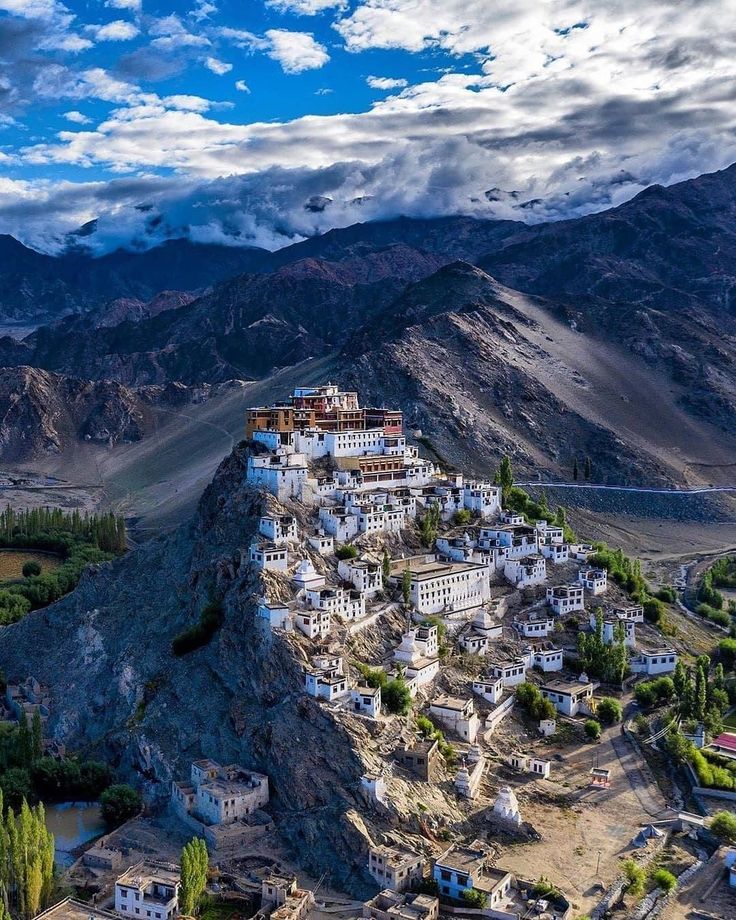
Himalayan Expeditions: Why Ladakh Stands Out
Himalayan expeditions in Ladakh aren’t just treks—they’re epic quests through a landscape that redefines adventure. From mountain passes to Himalayan vistas, Ladakh’s Himalayan roof stands out for its scale, solitude, and untamed beauty. This section cements why trekking in Ladakh outshines Europe’s tallest mountains, blending extreme altitudes with a discovery unmatched by the Alps or Caucasus. Let’s explore what makes Ladakh the pinnacle of Himalayan trekking destinations.
Mountain Passes and Himalayan Vistas in Ladakh
Ladakh’s mountain passes are the lifeblood of its Himalayan trekking routes, each a portal to jaw-dropping vistas. Gongmaru La (5,200 meters), on the Markha Valley trek, demands a steep climb through rocky scrambles—then rewards with Himalayan mountains stretching endlessly. Unlike Mont Blanc, where vistas compete with ski lifts, Gongmaru’s solitude amplifies its grandeur—prayer flags snap in the wind, a scene alien to Europe’s highest peaks. Trekkers pause here, breathless but awed, soaking in Ladakh’s Himalayan roof at its finest.
Konmaru La (5,200 meters), en route to Dzo Jongo, offers another spectacle—snow-dusted peaks tower over high-altitude plains, with Himalayan shepherds guiding yaks below. These passes aren’t mere hurdles; they’re milestones in Himalayan expeditions, revealing vistas that dwarf Europe’s summits. The thin air bites, but the reward—unbroken horizons of jagged ridges—makes it worthwhile. Trekking gear like poles and crampons eases the strain, unlike the Alps’ gentler crossings. Matho La (4,900 meters), near Kang Yangtse, frames the Karakoram range—its scale humbles Europe’s peaks.
Himalayan vistas shift with the light—golden at dawn, stark at noon—offering trekkers a visual feast. For those tracing Himalayan trekking routes Ladakh offers, these mountain passes prove why Ladakh’s wilderness outshines Europe’s tamed trails, blending physical challenge with natural splendor that redefines adventure travel Ladakh.
Ladakh’s Himalayan Roof vs Mont Blanc Experience
The Ladakh vs Mont Blanc trekking experience pits raw adventure against polished ease. Mont Blanc (4,810 meters), Europe’s icon, boasts glacial sweeps and alpine meadows—but its trails buzz with climbers, eased by huts and cable cars. Ladakh’s Himalayan roof, exemplified by Kang Yangtse (6,400 meters), swaps comfort for conquest—high-altitude trekking Ladakh here means pitching tents on windswept plains, not sipping coffee in refuges. Solitude reigns over crowds, a hallmark of Himalayan expeditions.
Altitude sets them apart—Ladakh’s 6,000m peaks soar nearly 2,000 meters above Mont Blanc, thinning oxygen and amplifying effort. Acclimatization tips and grit fuel Ladakh’s treks, while Mont Blanc’s guided ascents feel cushioned. Ladakh’s rugged trails wind through mountain passes and Himalayan vistas, offering a visceral tie to the Indian Himalaya—Mont Blanc’s paths, though scenic, lack this wild edge. Cultural stops at Ladakh monasteries add a layer Europe’s summits can’t match, enriching adventure travel Ladakh beyond peak exploration.
Weather seals the contrast—Ladakh’s dry summers differ from Mont Blanc’s unpredictable snows. Trekking gear for Ladakh—tents, layers, UV protection—mirrors its extremes, while Mont Blanc leans on infrastructure. Ladakh’s Himalayan roof delivers a primal trek that proves why it stands above Europe’s tallest mountains in spirit and scale, a testament to Himalayan highlands’ enduring allure.
FAQs
What is the Best Season for Trekking in Ladakh?
The best season for trekking in Ladakh is June to September, when the Himalayan roof Ladakh unveils its full glory. During these months, temperatures in Leh (3,500 meters) range from 15-25°C by day, dropping to 5-10°C on high-altitude plains like Nimaling—perfect for Himalayan trekking routes Ladakh offers. Monsoon rains skip Ladakh’s rain shadow, keeping rugged trails dry, unlike Europe’s soggy Alps. June offers clear skies and fewer trekkers, ideal for remote trails like Dzo Jongo. July-August peak with mild weather, though mountain passes may see snowmelt—pack waterproof gear. September’s golden light enhances Himalayan vistas, but nights turn chilly. Winter (October-May) buries peaks in snow, making high-altitude trekking Ladakh a mountaineering feat—stick to summer for safety and splendor.
How Do I Prepare for High-Altitude Trekking in Ladakh?
Preparing for high-altitude trekking Ladakh starts with acclimatization—spend 2-3 days in Leh (3,500 meters) to adjust to thin air before tackling 6,000m peaks. Hydrate constantly (4-5 liters daily) and ascend gradually to avoid altitude sickness. Fitness is key—train with cardio (running, cycling) and strength exercises (squats, lunges) for 6-8 weeks prior. Trekking gear includes sturdy boots, layered clothing (thermals, fleece, waterproof jacket), and a -10°C sleeping bag for high-altitude camping on Ladakh treks. Pack UV protection—sunglasses, hat, sunscreen—for intense sun. Navigation tools (GPS, maps) and a first-aid kit are musts. Unlike Europe’s highest peaks, Ladakh’s Himalayan treks demand self-reliance—prepare for solitude and scale with these essentials.
Are Trekking Permits Required for Ladakh Himalayan Routes?
Yes, trekking permits are required for many Ladakh Himalayan routes, especially restricted areas like Kang Yangtse and Dzo Jongo near Tibet’s border. The Inner Line Permit (ILP) costs ₹600-800, valid for 15 days—apply online via Leh’s District Magistrate or through local agencies. Markha Valley often skips this requirement, but check updates, as rules shift. Unlike Europe’s Alps, where permits are rare, Ladakh’s remoteness enforces this for adventure travel Ladakh. Bring ID and itinerary details for processing. Permits ensure legal access to Himalayan highlands, blending practicality with safety—don’t skip this step for a seamless trek above Europe’s tallest mountains.
What Makes Ladakh Treks Different from European Mountain Treks?
Ladakh treks differ from European mountain treks in altitude, isolation, and authenticity. Ladakh’s Himalayan roof boasts 6,000m peaks like Kang Yangtse, dwarfing Mont Blanc (4,810 meters) by over 1,500 meters—sustained high-altitude plains like Nimaling outlast Europe’s brief summit highs. Rugged trails and mountain passes demand self-reliance—no huts or cable cars here, just high-altitude camping versus the Alps’ infrastructure. Culturally, Ladakh weaves in Tibetan culture with monasteries along remote trails, a depth Europe’s peaks lack. Himalayan vistas stretch unbroken, unlike the Alps’ valley-bound views. For adventure journeys, Ladakh’s Himalayan treks offer raw, unfiltered grandeur that outshines Europe’s polished trails.
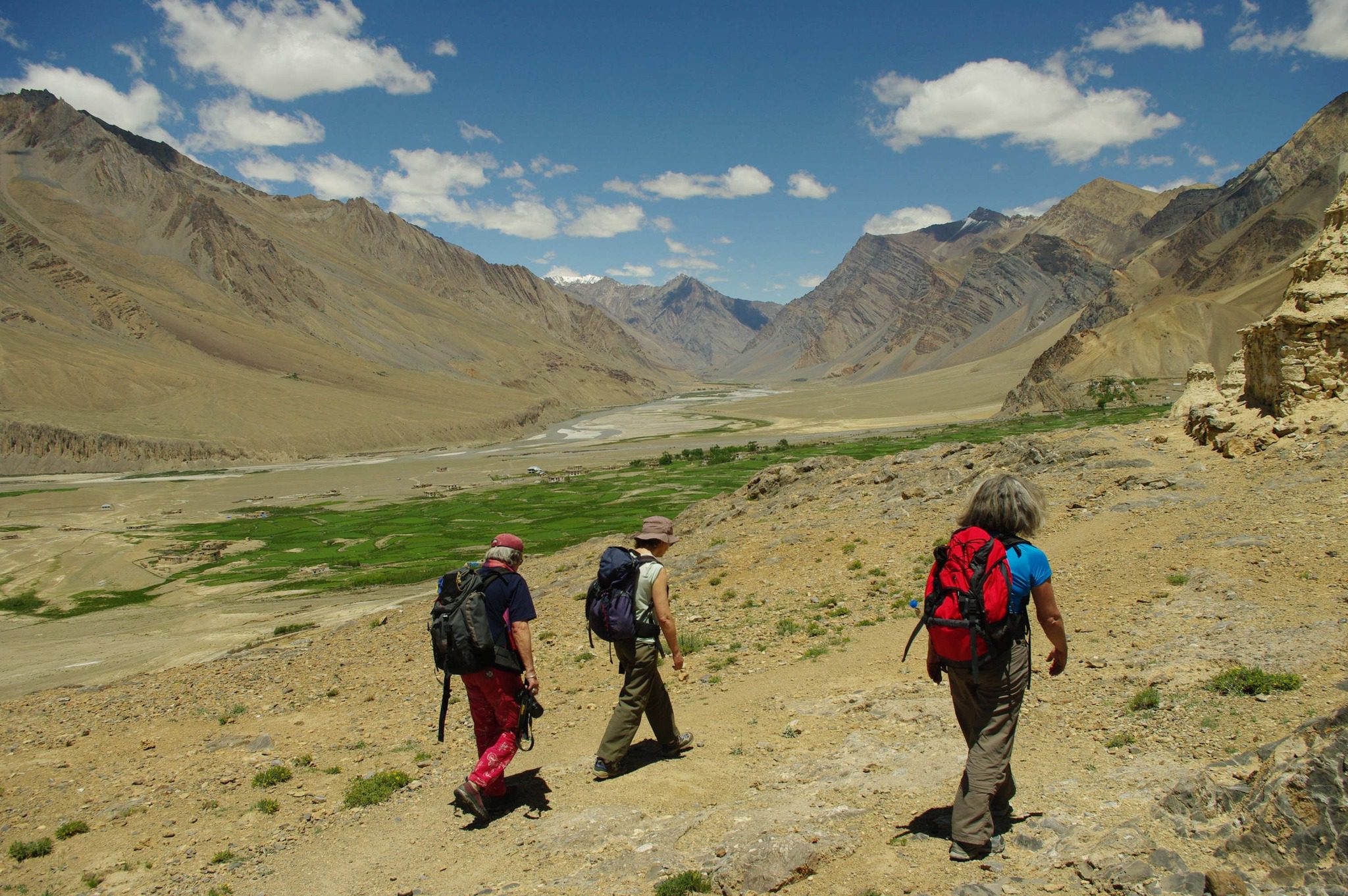
Conclusion
Ladakh’s Himalayan roof isn’t just a trek—it’s a transformative adventure that soars above Europe’s highest peaks. From the rugged beauty of Markha Valley to the towering summits of Kang Yangtse and Dzo Jongo, trekking in Ladakh delivers unparalleled scale, solitude, and cultural richness. These Himalayan expeditions outshine the Alps with their high-altitude plains, mountain passes, and Himalayan vistas, offering a raw connection to the Indian Himalaya that Mont Blanc can’t match. Whether you’re crossing Gongmaru La or resting at Ladakh monasteries, each step proves why the best treks in Ladakh redefine mountain hiking.
Ready to conquer Ladakh’s Himalayan treks? Plan your adventure travel Ladakh today—pack your trekking gear, secure your permits, and step into a world where the Himalayan roof awaits. Share your journey below or reach out for tailored tips—let’s make your trek above Europe’s tallest mountains unforgettable!

